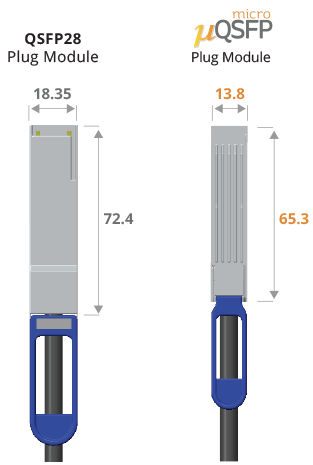The unrelenting demand for band width in the enterprise, and the resulting need for high-capacity, high-performance computing, is generating ever-faster network speeds. But 100 gigabits per second (Gb/s)? This would have seemed like a pipe dream 10 years ago, but it is now a fact of life in today’s enterprise networks and data centers.
What, specifically, is driving this demand? The major factors are familiar by now—bandwidth-intensive applications such as video over the Internet (e.g., You Tube, Hulu, Netflix); rapid advancement in research and development and supercom puter activities; migration of local area net works (LANs) from 1 Gb/s to 10 Gb/s to the desktop; and greater bandwidth demand in the data center, where all this information is aggregated, stored and processed.
Ethernet speeds of 40 Gb/s and 100 Gb/s were originally developed for different application areas—40 Gb/s was targeted at high-speed server/storage connections, while 100 Gb/s was viewed as the solution for network aggregation, core networking (i.e., switching and routing), high-performance computing, and service provider and Internet exchange peering points. However, the implementation of these protocols has diverged from their intended use. The 40 Gb/s links are being used for aggregation, and an IEEE® study group has determined that there is a need to develop extended reach 40 Gigabit Ethernet (GbE) to support the telecommunications marketplace. While these areas are still viewed as target 100 Gb/s applications, the market for 40 Gb/s links has also been established.
What the Standards Say Multimode optical fiber continues to be a cost-effective choice for enterprise applications, including data centers and storage area networks (SANs). In 2002, the IEEE 802.3ae standard for 10 GbE defined both the multimode and singlemode optical fiber links that support various distances within these application spaces. In 2010, the IEEE 802.3ba committee updated these recommendations by defining similar links for 40 and 100 GbE.
According to IEEE 802.3ba, multimode optical fiber supports both 40 and 100 Gb/s speeds over link lengths up to 150 meters (m [492 feet (ft)]) when using OM4 optical fiber (multimode optical fibers are identified by the optical multimode (OM) designation as outlined in the ISO/IEC 11801 standard). Singlemode optical fiber supports 100 Gb/s link lengths of 10 kilometers (km [6.2 miles (mi)]) and 40 km (25 mi) and a 40 Gb/s link length of 10 km (6.2 mi).
The multimode recommendations are designed to preserve the cost efficiencies of vertical cavity surface emitting laser (VCSEL) transceivers.
The standards call for a physical medium dependent (PMD) solution for short-reach multimode optical fiber systems, such as data centers and high-speed LAN applications. Using a parallel optics design, one 10 Gb/s signal is transmitted on either four fibers (for 40 Gb/s) or 10 fibers (for 100 Gb/s). The arrayed transceivers contain either four or 10 VCSELs and detectors, accordingly.
Why not use singlemode optical fiber, with its advantages in bandwidth and reach compared with multimode? Because of the finer tolerances required due to singlemode optical fiber’s small core size, the optoelectronics used for this optical fiber type are more expensive than those used for multimode optical fiber. Singlemode links are
ideal for longer reach installations such as long campus backbones, metropolitan area networks and a small percentage of long data center links. These singlemode applications use wavelength division multiplexing (WDM) to support the longer link distances.
